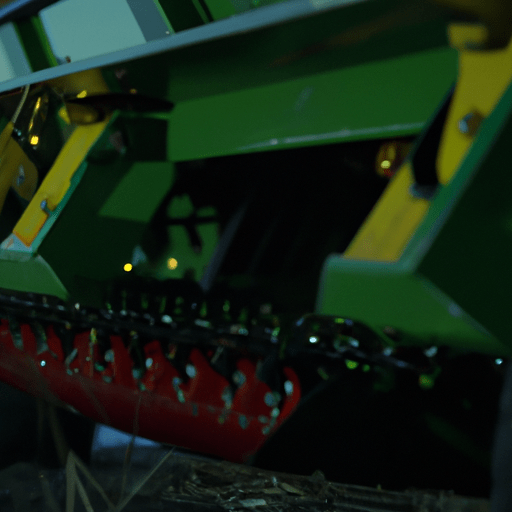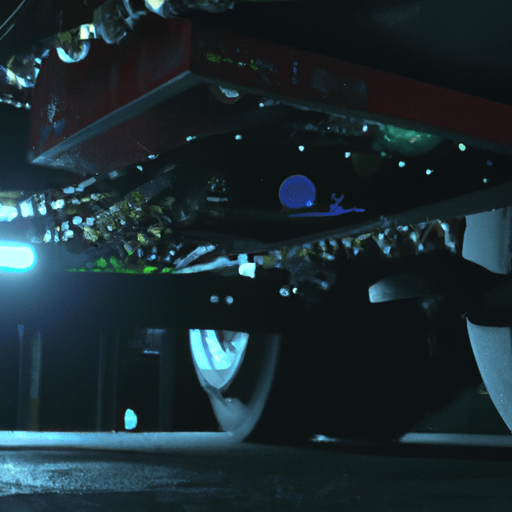-
Table of Contents
Introduction
Understanding the Mechanics of Dump Trailers: An Introduction
Dump trailers are specialized vehicles designed for the efficient transportation and unloading of bulk materials, such as sand, gravel, and demolition waste. These versatile trailers play a crucial role in various industries, including construction, agriculture, and waste management. This introduction aims to provide an overview of the essential mechanics of dump trailers, including their key components, operational principles, and the factors that influence their performance and capabilities. By gaining a deeper understanding of these aspects, users can optimize their use of dump trailers and make informed decisions when selecting the right equipment for their specific needs.
Exploring Dump Trailer Mechanics: How Dump Trailers Work and Understanding Their Operations
Understanding the Mechanics of Dump Trailers
Dump trailers are an essential piece of equipment for many industries, including construction, landscaping, and agriculture. They are designed to transport and unload large volumes of materials, such as dirt, gravel, and debris, quickly and efficiently. But have you ever wondered how these versatile trailers work? In this article, we will explore the mechanics of dump trailers and help you understand their operations.
At the heart of every dump trailer is a hydraulic system that powers the lifting and lowering of the trailer bed. This system consists of a hydraulic pump, a reservoir for hydraulic fluid, and one or more hydraulic cylinders. The pump is typically powered by the tow vehicle’s engine or an auxiliary power unit, and it pressurizes the hydraulic fluid, which is then directed to the cylinders. When the fluid is forced into the cylinders, it causes the pistons inside to extend, which in turn raises the trailer bed. Conversely, when the fluid is allowed to flow back into the reservoir, the pistons retract, and the bed lowers.
The hydraulic system is controlled by a series of valves and levers, which allow the operator to raise and lower the bed as needed. In most cases, the operator can control the dump trailer from inside the tow vehicle using a remote control or a wired control panel. Some dump trailers also have manual controls on the trailer itself, which can be used in case of an emergency or if the remote system fails.
One of the key components of a dump trailer is its frame, which must be strong enough to support the weight of the materials being transported and the forces generated by the hydraulic system. Most dump trailers are built using heavy-duty steel or aluminum, with reinforced cross members and gussets to provide additional strength and rigidity. The frame is also designed to distribute the weight of the load evenly across the trailer’s axles, which helps to maintain stability and prevent tipping.
The trailer bed is another critical component, as it must be able to withstand the constant loading and unloading of materials. Dump trailer beds are typically made from high-strength steel or aluminum and feature a smooth, sloping surface to facilitate the unloading process. The bed is also equipped with a tailgate, which can be opened and closed to control the flow of materials during unloading. Some dump trailers also have removable side panels, which can be used to increase the trailer’s capacity or to accommodate different types of materials.
In addition to the hydraulic system, dump trailers also rely on a variety of other components to ensure smooth and efficient operation. These include heavy-duty axles and suspension systems, which help to absorb the shock and vibrations generated during transport, as well as high-capacity brakes to ensure safe and controlled stopping. Dump trailers also typically feature a variety of safety features, such as lights, reflectors, and safety chains, to help prevent accidents and ensure the safety of the operator and other road users.
In conclusion, dump trailers are highly specialized pieces of equipment that rely on a combination of hydraulic power, heavy-duty construction, and carefully designed components to transport and unload large volumes of materials quickly and efficiently. By understanding the mechanics of dump trailers, you can better appreciate the engineering and design that goes into these versatile and indispensable tools. Whether you’re a seasoned professional or just curious about how these machines work, we hope this article has provided you with valuable insight into the world of dump trailers and their operations.
Q&A
Question: How do dump trailers work?
Answer: Dump trailers work by using a hydraulic system to lift the trailer bed, allowing the contents to slide out from the rear. The hydraulic system consists of a hydraulic pump, cylinder, and hoses, which are powered by the tow vehicle’s battery or a separate power source. When the hydraulic pump is activated, it pushes fluid into the cylinder, causing it to extend and lift the trailer bed. The angle of the bed increases, and gravity causes the contents to slide out through the rear tailgate. Once the dumping process is complete, the hydraulic system is reversed, retracting the cylinder and lowering the trailer bed back to its original position.



1 thought on “Understanding the Mechanics of Dump Trailers”